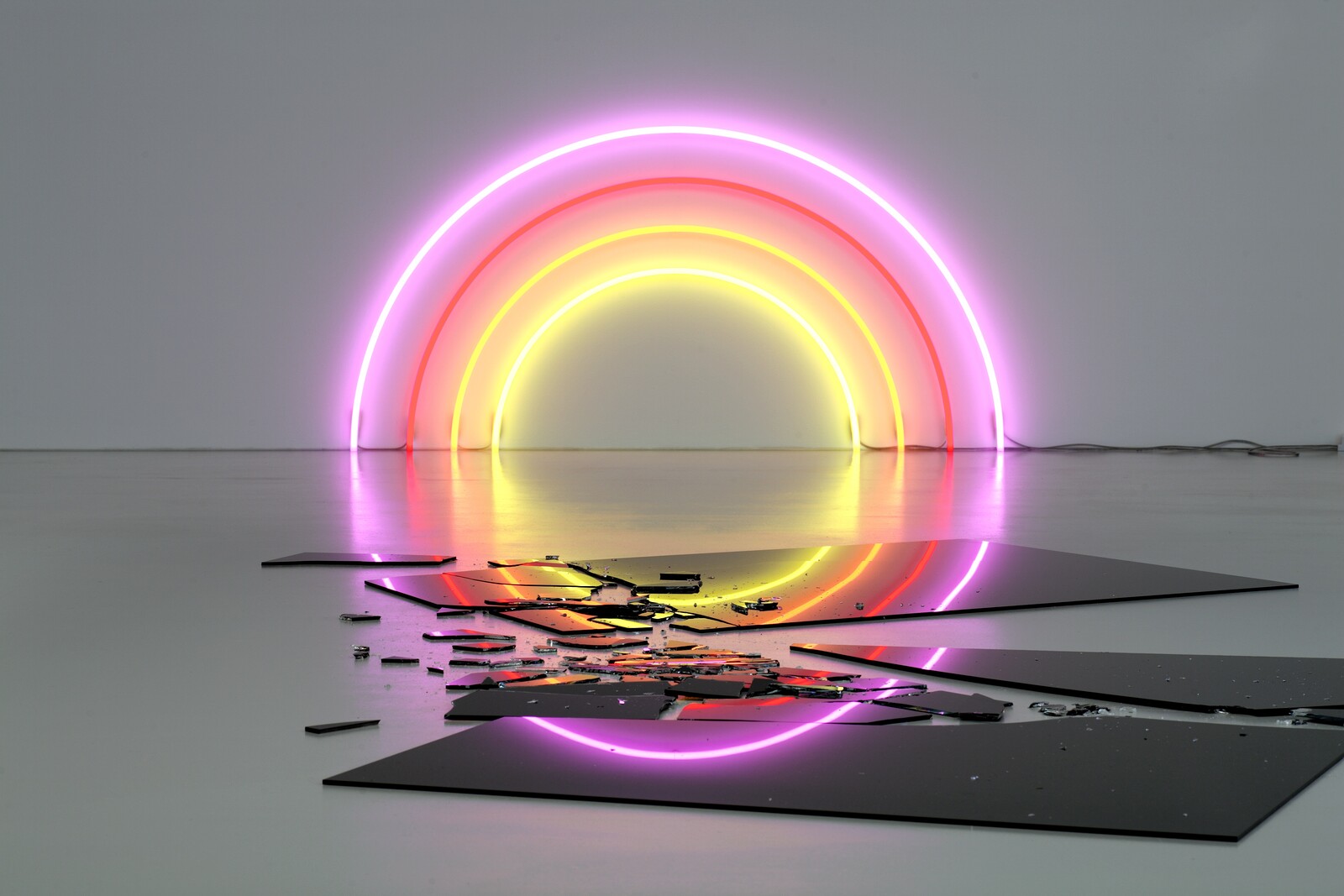March 12–July 10, 2022
Hollerplatz 1
38440 Wolfsburg
Germany
Artificial light sources are an essential prerequisite of modern global life. Their permanent and excessive use is, however, associated with numerous negative effects. On the one hand, artificial light makes cultural events possible, offers social space and protection, can showcase people, objects, or consumer articles and thus lend them meaning. On the other hand, power is exercised with the targeted use of electric light: It can be used to monitor, manipulate, exclude, or even destroy. The exhibition Power! Light! features some 80 works of light art by 60 internationally renowned artists, offering for the first time insight into the fascinating spectrum of light art that is political in the broadest sense.
Although there are numerous negative effects associated with the persistent and excessive use of artificial light, humans are almost magically attracted to light and are enthusiastic about the broad range of technical opportunities. Within the past 150 years, civilization has created a wide variety of possibilities to replace natural light and thus break the sole dominance of the sun. Without artificial light, global economic and cultural development would have been virtually inconceivable.
And not only humans are attracted to light: Current issues surrounding ecology are addressed in works of light art such as Nana Petzet’s Light Trap Hamburg (2015/2018), which focuses on the mass decline of insect populations. With the help of an algorithm, Daniel Canogar’s Troposphere (2017) translates data of global environmental phenomena and natural disasters into abstract color animations. The extent to which we are all trained and manipulated by advertising is demonstrated by Monica Bonvicini’s aesthetic and yet forbidding neon sign NOT FOR YOU (2006), as well as by Daniel Pflumm’s light boxes, in which it is unmistakable, even without the company lettering, which firm is behind the brightly colored message.
Questions regarding romanticism, happiness, and utopias arise in Lori Hersberger’s Sunset 164 (2006), in which colorful neon arches feign an eternal sunset—a state that is neither day nor night and quickly ends in the beauty of mere superficial appearance. And do you remember the last time you looked up at a clear, star-filled sky? Siegrun Appelt’s installation, created especially for the Kunstmuseum Wolfsburg, draws attention to the widespread light pollution by allowing light to be physically experienced in an extremely concentrated form.
The permanent illumination in Gregor Schneider’s High Security and Isolation Cell No. 2 (2005) is a special kind of physical experience, with which he refers to the permanent exposure to a light source as a method of “white torture.” While escape seems impossible here, the flight from Mariana Vassileva’s Break In / Out: Breathing Light (2013) has already been successful.
A spotlight on a concrete political scandal is cast by Warren Neidich’s spectacular neon installation Pizzagate Neon (2016), which addresses a politically motivated fake news scandal in the run-up to the 2016 American presidential election surrounding Hillary Clinton’s alleged involvement in a child porn ring.
In the end, we all long for an ideal place—Un endroit idéal (2000)—as envisioned by Anne Marie Jugnet & Alain Clairet, where there is light, but also necessarily darkness. In order to reach this place, one’s own use of artificial light must also be critically questioned.
Artists: Siegrun Appelt, Joseph Beuys, Christian Boltanski, Claire Fontaine, Olafur Eliasson, Patrick Fenech, Sylvie Fleury, Georg Herold, Lori Hersberger, Damien Hirst, Michael Hirschbichler, Alfredo Jaar, Christian Jankowski, Anne Marie Jugnet & Alain Clairet, Mischa Kuball, !Mediengruppe Bitnik, molitor & kuzmin, Warren Neidich, Jens Pecho, Nana Petzet, Gregor Schneider, Mariana Vassileva, Naneci Yurdagül, etc.
The exhibition will be accompanied by a comprehensive bilingual publication (German/English) published by Verlag der Buchhandlung Walther and Franz König (designed by Jan Kiesswetter, Berlin) with contributions by Andreas Beitin, Holger Broeker, Jo Joelson, Annette Krop-Benesch, Christoph Markschies, Julia Otto, and Michael Schwarz from the fields of art history, sociology, biology, theology, and philosophy.







